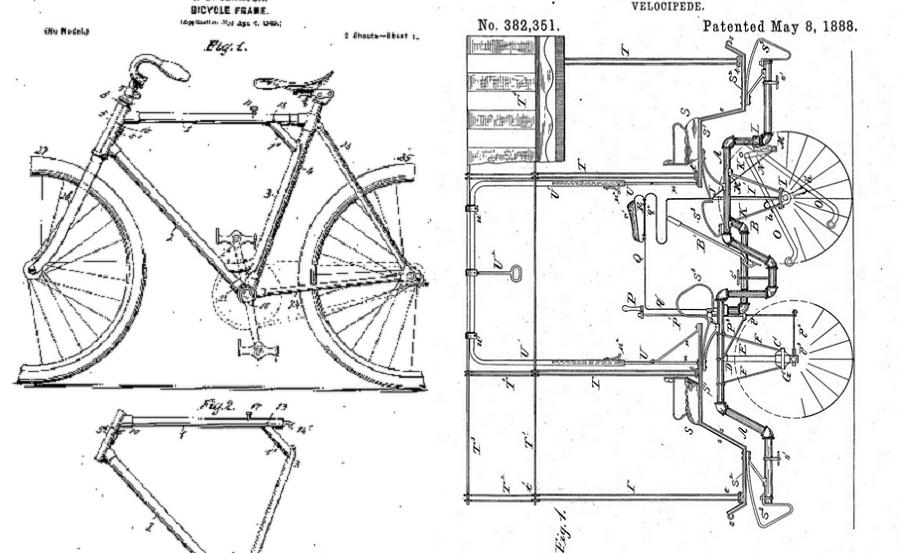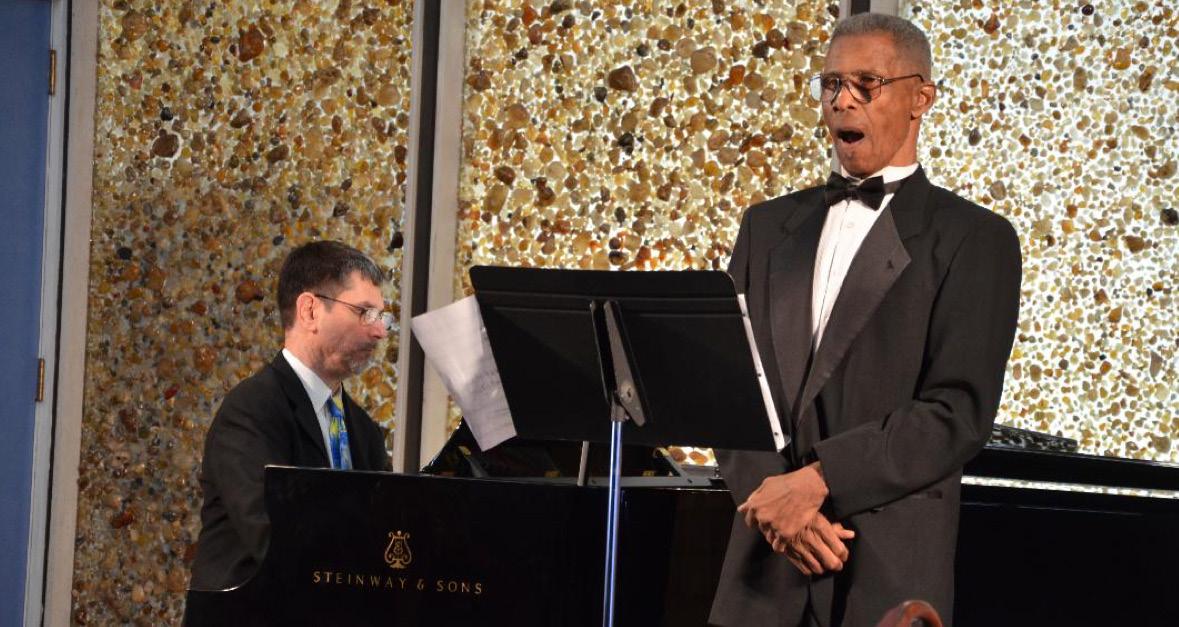
6 minute read
IN MEMORIAM: Autris Paige
tival in Oregon from 1983-2017, with artists from around the world. Puerto Ricans Ilya and Raphael LeBron, soprano and baritone, remember him: “He leaves us with a warm memory of the simplicity that made him great: as a human being, as a friend and as a masterful artist!”
America’s bicycle revolution began in the 1890s. Riding, leisurely or otherwise, represented social status for Whites. For African Americans, the bicycle was an acute symbol of the extent and limits of freedom in the age of Jim Crow, according to the Washington Post. It also served as a badge of freedom; relief from the otherwise segregated public transit systems.
Southern Blacks adopted cycling for many of these same reasons. Several played a significant role in the world of cycling, including contributing to the shape and development of the bicycle.
Matthew A. Cherry (1834–unknown) was known to have invented several devices that helped revolutionize the transportation industry. His improvements were to the velocipede, a metal seat frame with two or three wheels attached. A person sitting on the seat could propel themselves forward as fast as they enjoyed by moving their feet along the ground in a fast-walking or even running motion.
Cherry’s model of the velocipede was an improvement on past versions, as pedals were added. This soon morphed into the tricycle, for which he received a patent in 1888.
Today, tricycles are the choice of transportation for many as opposed to bicycles, because on a bicycle, the rider is required to look down, which decreases visibility. Motorized versions are popular in many Asian and African countries for transporting both passengers and goods. In the United States and Canada, they are also used extensively for shopping and often, exercise.
In 1899, the bicycle frame was invented and patented by Isaac R. Johnson. A New Yorker, Johnson was not the first to invent the bicycle frame, but the first African American to invent and patent one that could be folded or disassembled for easy storage. The frame was popularized by those who traveled or vacationed often.
Today, many daily commuters depend on this model.
According to the patent documentation, Johnson’s frame was different because of “a steeringhead section and a frame with a slot-and-stud connection for detachably uniting; a bicycle frame with a front and rear sheath or tube section; and a steering-post sleeve and seat-post tube to which the sheaths are removably connected.”
Many deliveries of food supplies, medication, and other goods were often made by bicycle, specifically in more rural areas. Workmen and even doctors visited homes with tools and instruments in tow. It was a way to interact with the community and offer a well-needed service. In 1899, Jerry Certain designed and patented the pannier, or parcel carriers that could attach to several different parts of the bicycle. There was also a complete set of bike packs, a pair of baskets on the front forks, and a pair of baskets over the rear wheel.
Little information about Certain’s life has been recorded. His inventions, however, have evolved and are still in use by delivery companies and couriers today.
Be inspired by the timely genius that led to the many inventions of African Americans. Read “Black People Invented Everything: The Deep History of Indigenous Creativity” by Dr. Susan J. Dass.
August 17, 1938 – January 12, 2023
AUTRIS T. PAIGE was the youngest child born to Estella and Overton Paige in Sugar Land, Texas on Aug. 17, 1938. He passed away Jan. 12, 2023, in Oakland after a brief illness. He was supported and comforted by his longtime companion Donna Vaughan.
Mr. Paige grew up in Oakland, California where he attended Star Bethel Church and graduated from McClymonds High School. He received a Bachelor of Arts degree from San Francisco State University before pursuing advanced studies in musical theatre at the University of Southern California.
He served in the U.S. Air Force.
In 1971, he made his debut with the Los Angeles Civic Light Opera, appearing in Candide at the Los Angeles Music Center and at the Curran Theatre in San Francisco. He appeared with Ray Charles and the American Ballet Theatre and performed in several musical theatre productions on Broadway including Lost in the Stars; Don’t Bother Me, I Can’t Cope; as Walter Lee in Raisin; and in Timbuktu with Eartha Kitt.
Mr. Paige has also sung with the New York City Opera, the Houston Grand Opera, the Metropolitan Opera and with the San Francisco Opera. Other opera companies in which he performed include the Seattle Opera and the Glyndebourne Opera in England.
He was featured in the PBS film and award-winning EMI recording of Porgy and Bess as well as the recording of the opera X, The Life and Times of Malcolm X.
When he returned to Oakland to “retire,” he met Dr. W. Hazaiah Williams, founder and director of Today’s Artists Concerts (now Four Seasons Arts), who auditioned Paige and invited him to perform on his series. Mr. Paige began a new phase of his musical career.
He appeared many times under the auspices of Today’s Artists Concerts/Four Seasons Arts in New York’s Alice Tully Hall and in venues around the Bay Area in their Art of the Spiritual programs. He was featured in his own Spiritual Journey in 2009. His recently released solo CD, Spiritual Journey, based on this program, has received critical acclaim.
Paige performed regularly at Four Seasons’ Yachats Music Fes-
Baritone Anthony Turner of New York says, “Autris was the embodiment of class and elegance. He delivered every song with a warm silken tone and economy of gestures. Autris gave of himself, his truth, his joy and love.”
Pianists Dennis Helmrich and Gerald Hecht often collaborated with Mr. Paige said, “Autris Paige was among the most intuitively refined musicians we have encountered: a pure pleasure and a cherished memory.”
Pianist Jeongeun Yom, pianist, responds, “Autris will be remembered for his kindness, cheerfulness, and above all for his voice, with which he touched the listeners’ heart.”
In 2011, Mr. Paige was featured in Four Seasons Arts’ annual W. Hazaiah Williams Memorial Concert with the Lucy Kinchen Chorale and later with soprano Alison Buchanan. In 2013, he performed his Spiritual Journey II in Berkeley with pianist Othello Jefferson.

A second CD entitled Classics and Spirituals was released in September 2013. Pianist Jerry Donaldson of Oakland was a frequent collaborator with Mr. Paige, performing throughout the Bay Area.
A Celebration of Life for Autris Paige will take place Friday, Feb. 3 at 11 a.m. at Third Baptist Church of San Francisco, 1399 McAllister Street, San Francisco. A repast will follow the service.
Apply for Wildlife Conservation, Education Grants
March 6 is deadline for nonprofits to land grants worth up to $5,000
By Tamara Shiloh
Novato, CA – Nonprofits that support nature and wildlife education have until March 6 to apply for grants to support environmentally friendly promotions through the Marin County Fish and Wildlife Commission.
Grants worth up to $5,000 are earmarked for promotions of environmental and habitat restoration projects in Marin County. About a dozen nonprofits are awarded grants annually through the program. The nonprofits must be registered as 501(c)3.
The Fish and Wildlife Commission advises the Marin County Board of Supervisors on expenditures of funds obtained through fines levied for fish and wildlife violations in Marin. The funds are designated by Section 13100 of the Fish and Game Code to be used to enhance fish and wildlife resources in the county and for public education.
The commission is staffed by the Marin County office of the University of California Cooperative Extension, better known as UCCE Marin. Its mission is to sustain Marin’s vital agriculture, environment, and communities by providing University of California research-based information in agriculture, natural resource management, healthy living, and youth development. UCCE programs operate through a partnership of the County of Marin government, the University of California, the federal government, and private funds.
Grant proposals are submitted to the commission chair during the first quarter of the calendar year and are recommended on a competitive basis based on availability of funds. Commission members review applications at their regular April meeting, set funding levels, and vote to recommend projects for approval by the Board of Supervisors.
The grant application form is online. For more details about grant application process, visit the commission website or call (415) 473-4204.
By Edward Henderson California Black Media
Assemblymembers Corey Jackson (D-Riverside) and Ash Kalra (D- San Jose) have introduced a resolution to alter the dress code on the floor of the lower chamber of the State Legislature.
House Resolution 9 (HR9) would make it appropriate for individuals visiting the chamber floor to wear attire considered professional dress based on various cultural standards.
According to Assembly Rule 118.1, “Members of the Legislature, officers or employees of the Legislature, accredited members of the press, or any other persons may be restricted from admission to the Floor of the Assembly if they are inappropriately attired.”
As the current rule stands, there is room for discrimination against attire that does not meet Eurocentric standards, proponents of HR 9 say.
“Eurocentrism, which refers to a bias on the vantage point of European and Western cultures,






